The modular design allows highest cost effectiveness due to identical basic components in each configuration.
Unlimited flexibility in test setups with basic components to cover current and future applications. The basic components are interchangeable and compatible with each other.
TRIOPTICS offers autocollimators, collimators and telescopes with different focal lengths and objective tube diameters. In addition, there is a large selection of reticles, which can also be custom-made if required.
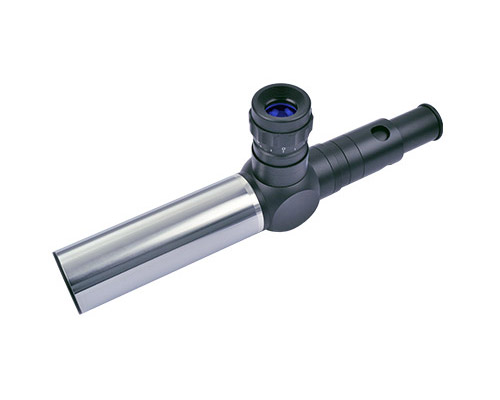
Fixed focus setting with infinite setting
Dual micrometer screw for shifting the reticle (optionally with digital display) available
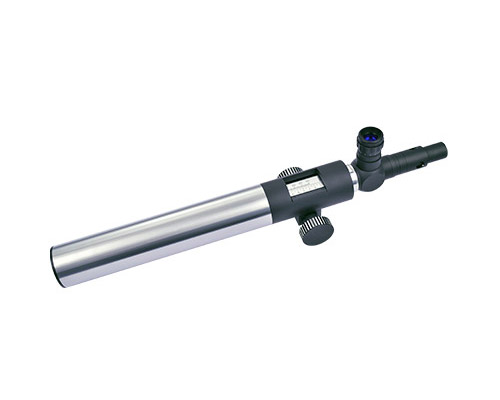
Variable focus adjustment with finite distance setting
Dual micrometer screw for shifting the reticle (optionally with digital display) available
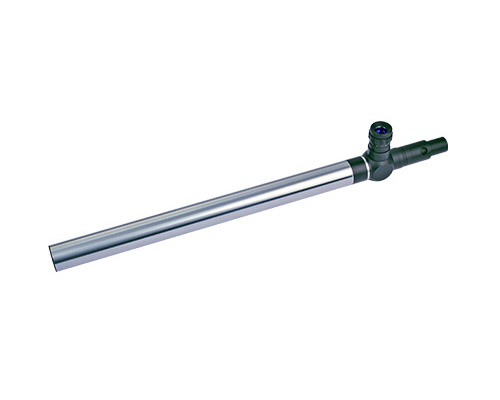
50 to 100% larger field of view in comparison to standard autocollimators
Fixed focus setting with infinite setting
Dual micrometer screw for shifting the reticle (optionally with digital display) available
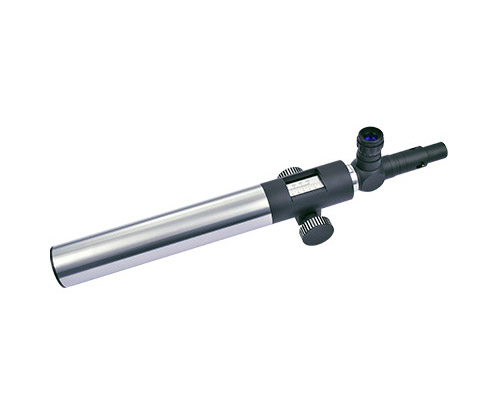
50 to 100% larger field of view in comparison to standard autocollimators
Variable focus adjustment with finite distance setting
Dual micrometer screw for shifting the reticle (optionally with digital display) available
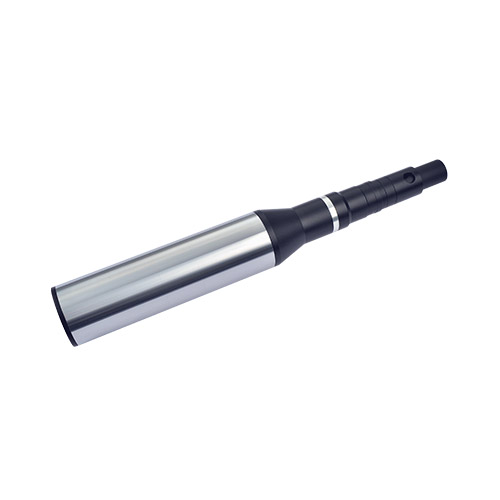
The image of the reticle is projected into infinity at a wavelength of 546 nm (other wavelengths also available on request)
The distance between reticle and objective lens is fixed
Dual micrometer screw for shifting the reticle (optionally with digital display) available
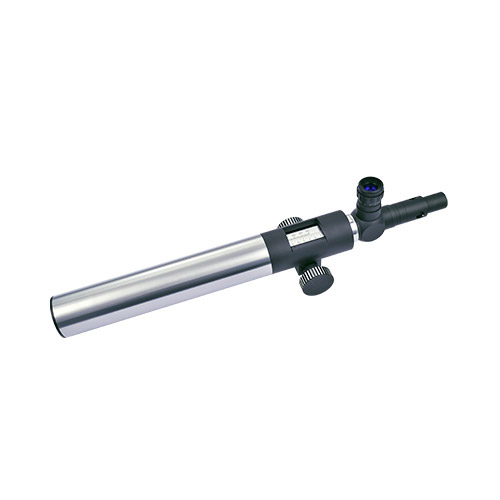
The focal point setting is variable and both a finite and infinite distance setting are possible
Dual micrometer screw for shifting the reticle (optionally with digital display) available
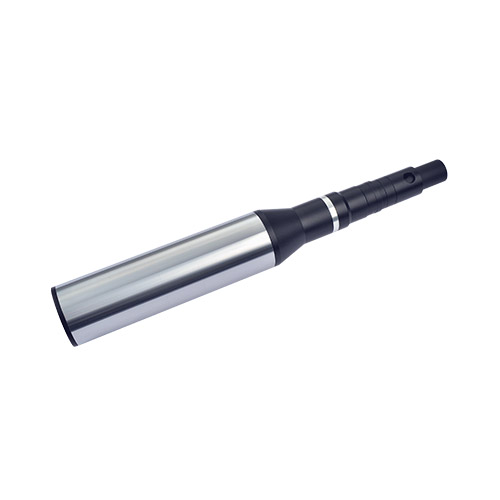
50 to 100% larger field of view in comparison to standard collimators
The image of the reticle is projected to infinity
Dual micrometer screw for shifting the reticle (optionally with digital display) available
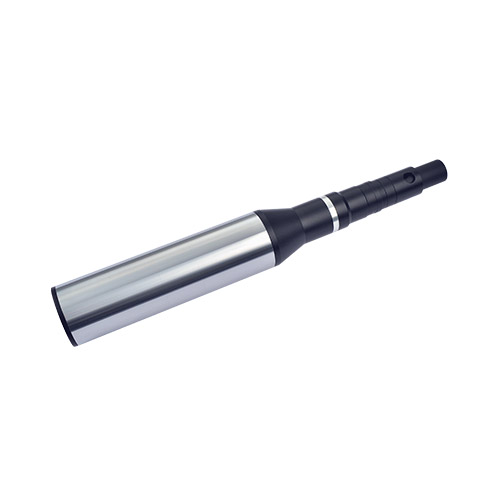
50 to 100% larger field of view in comparison to standard collimators
Dual micrometer screw for shifting the reticle (optionally with digital display) available
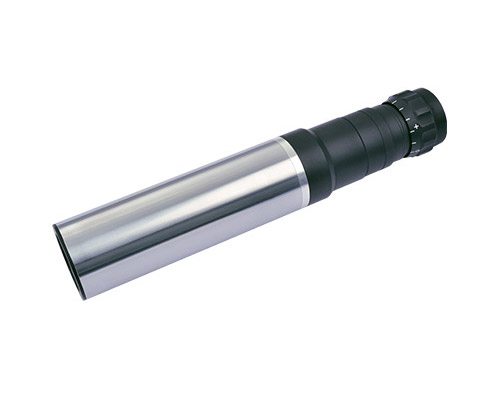
The image is at an infinite or very large distance
Optionally the industrial telescopes can be equipped with dual micrometers
Optionally with reticle changer (RC)
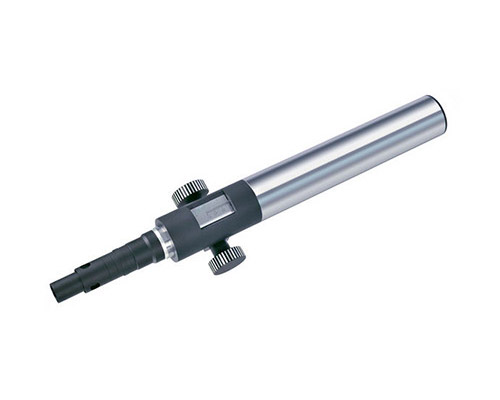
The focal point setting is variable and both a finite and infinite distance setting are possible
Optionally the test telescopes can be equipped with dual micrometers for measuring image angles in two different directions.
Optionally with reticle changer (RC)
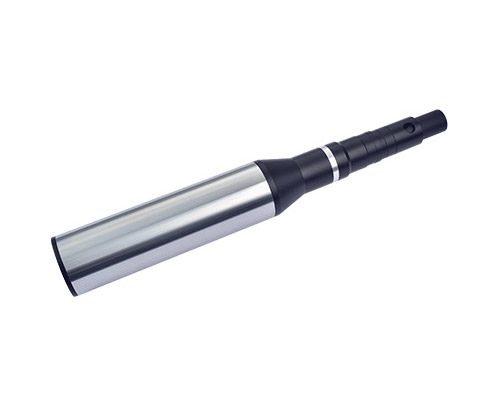
50 to 100% larger field of view in comparison to standard test telescopes
Optionally the test telescopes can be equipped with dual micrometers
Optionally with reticle changer (RC)
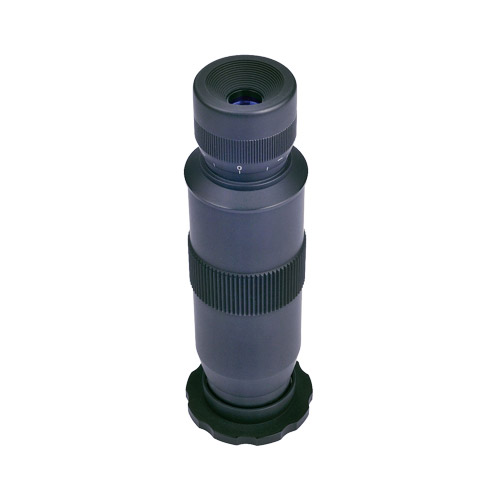
Measuring of the diameter of exit pupil
Checking the distance between eyepiece and exit pupil
Measurement of magnification of telescopes
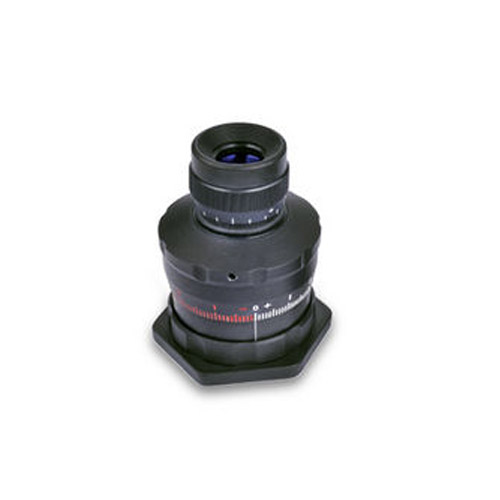
Dioptometer can be attached to customer individual holders
Nearly all TRIOPTICS Dioptometers have large graduations and permit easy reading
Eyepieces are interchangeable and can be adapted to custom needs

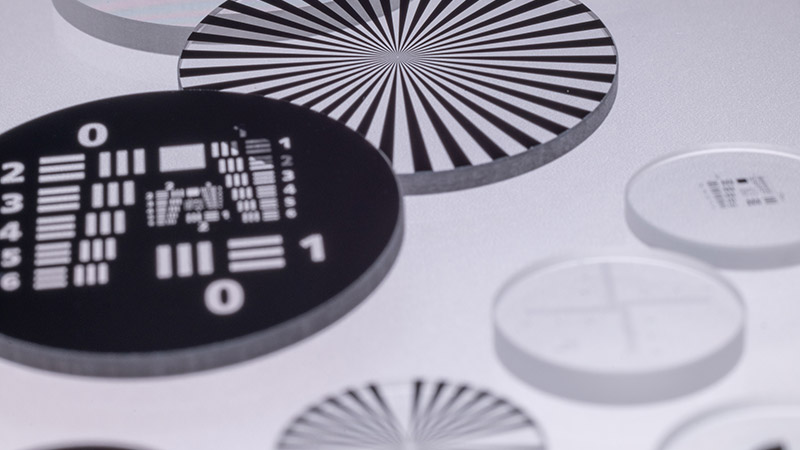
For telescopes: Telescopes are used to observe objects that are imaged onto the eyepiece-reticle. For this reason it is recommended to use a positive eyepiece reticle.
For collimators: Collimators image the structure imprinted on the reticle at some distance. Generally every reticle can be selected, but if fine structures are imaged it is recommended to use a negative reticle.
For autocollimators: For autocollimators the right combination of reticles is important. RET-32 / RET-12 means RET-12 is the collimator-reticle and RET-32 is the eyepiece-reticle.
Single cross, positive
Single cross, negative
Double cross, positive
Siemens star
Slanted edge, positve
Slanted edge, negative
USAF resolution test pattern, positive
USAF resolution test pattern, negative
Pinhole, negative
H-Type, negative
Single cross, positive
Single cross, negative
Single Slit, negative
H-Type, negative
Double cross, positive
Siemens star
USAF resolution test pattern, positive
USAF resolution test pattern, negative
Angle graduated scales, positive
Angle graduated scales, negative
Angle graduated scales, positive
Distance graduated scales, negative
Angle graduated scales, positive
Angle graduated scales, negative
Distance graduated scales, positive
Distance graduated scales, negative
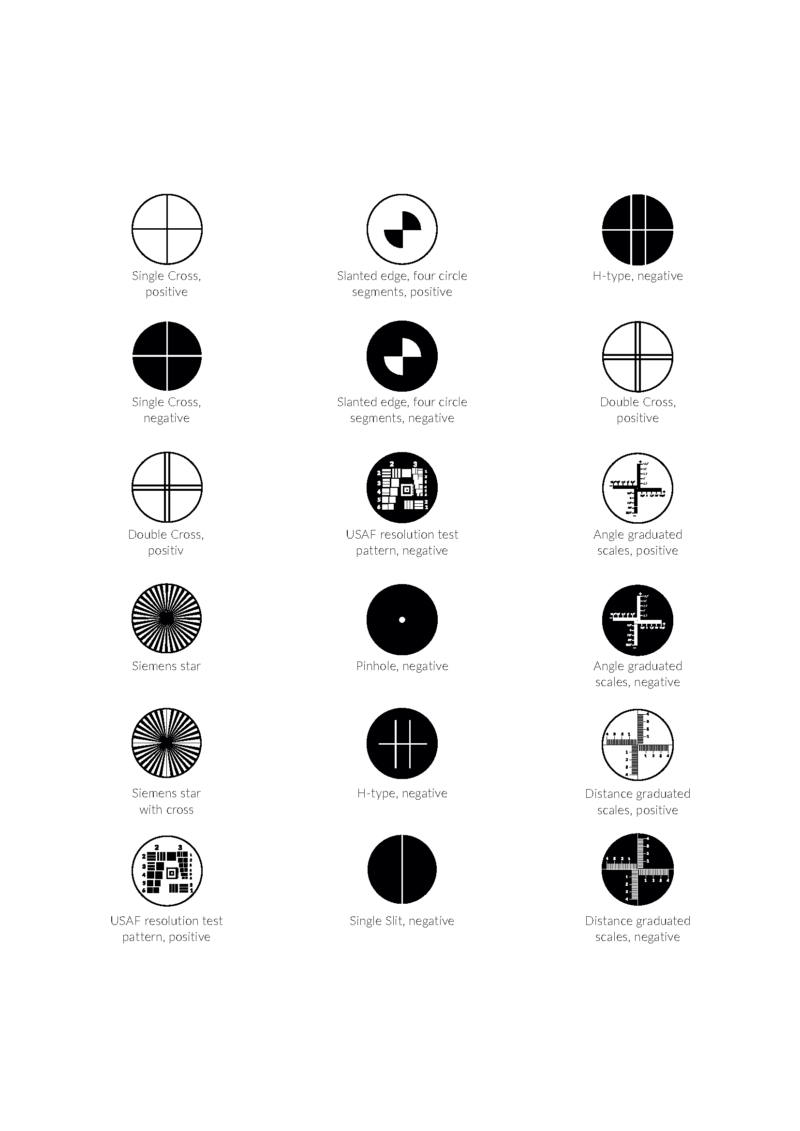
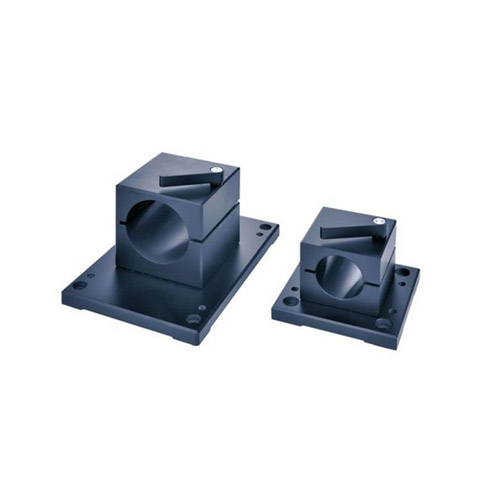
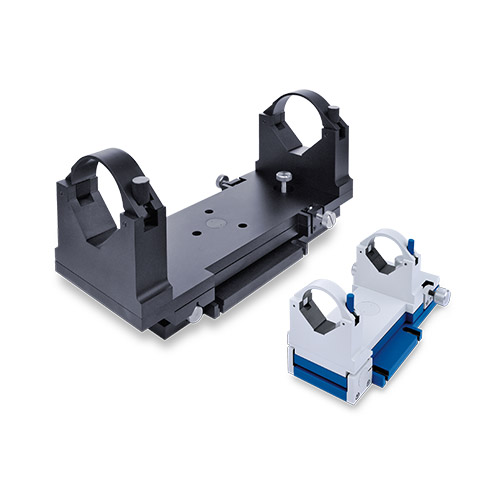
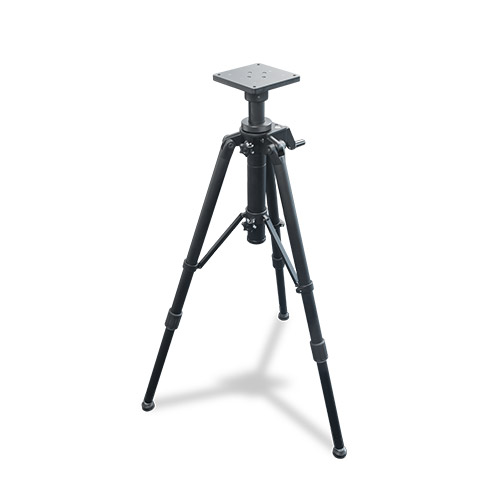
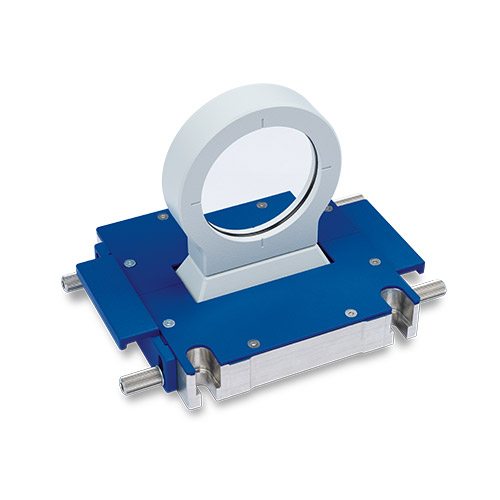
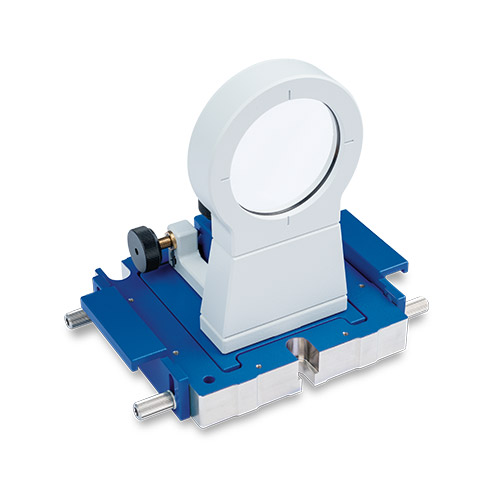
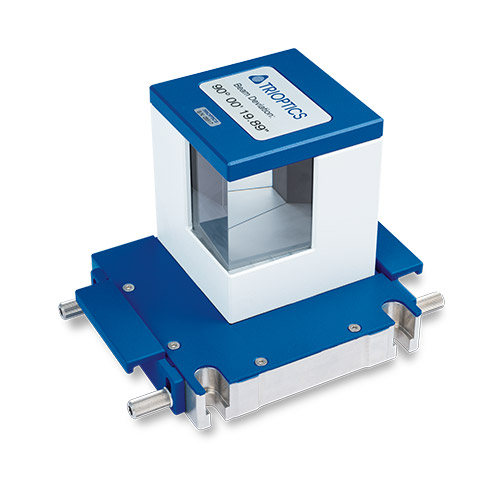
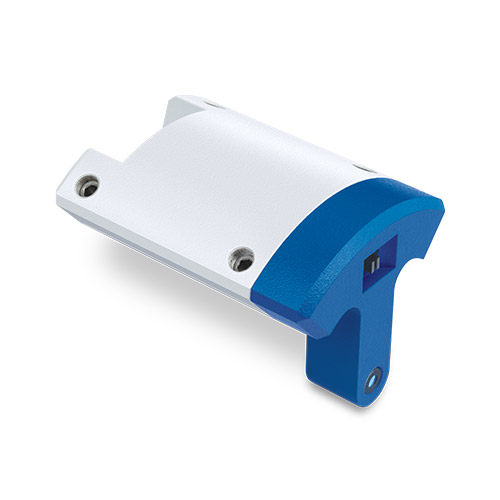
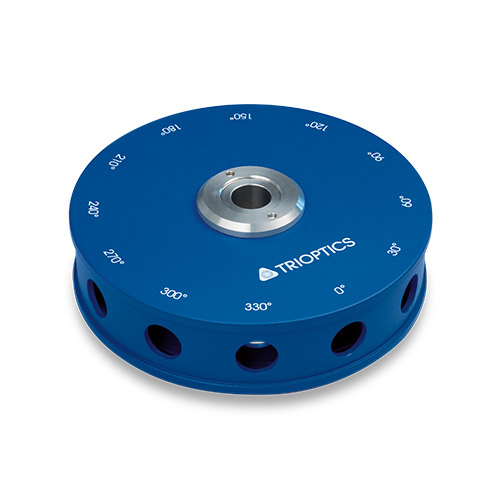
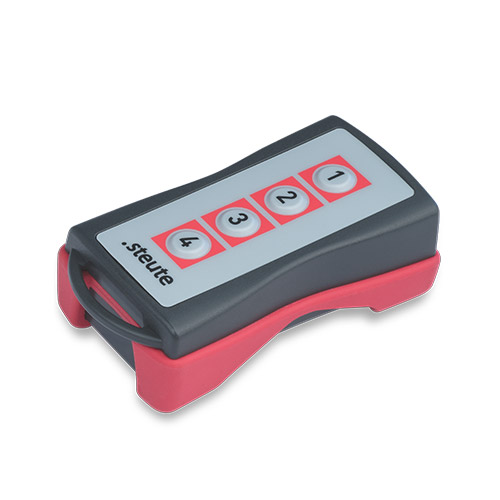
The Collimator is an optical instrument consisting of a well corrected objective lens with an illuminated reticle at its focal plane.
The emerging beam is parallel (collimated beam), so that the image of the reticle is projected at infinity. The collimator is usually set up in this way known as infinity adjustment (setting).
When moving the reticle out of the focal plane of the objective lens, the shape of the emerging beam will change:
The collimator is often used as a test chart projector for the inspection of infinity corrected objective lenses, e.g. photography lenses. In combination with a telescope, the collimator can also be used for aligning machine elements along the line of sight

Collimator
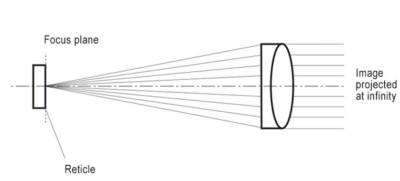
Collimator – Infinity setting
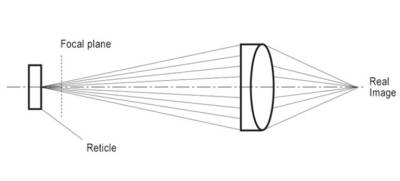
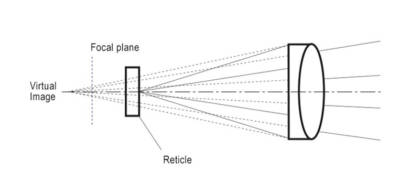
Collimator – Distance settings
The telescope is an optical tool that images an object at a far distance – usually preset to infinity – into the image plane of the objective lens. The image is then magnified and visually inspected by an eyepiece. For measurement purposes usually a graduated reticle is located in the image plane. The magnification of the telescope is given by the ratio of the objective focal length and the eyepiece focal length.
When the incoming beam is parallel, the image observed through the telescope is located at infinity i.e at a long distance. This set up in is known as infinity setting.
Similar to collimators, the telescopes can be focused at finite distances. Attaching a draw out tube to the reticle adapter to move the reticle out of the focal of the objective lens, the standard telescope becomes a focusing telescope. Depending on the location of the reticle relatively to the focal plane, it results a real or a virtual image at a finite distance.

Telescope
The autocollimator combines both optical tools, the collimator and the telescope into one instrument using a single objective lens. Both beam paths are separated by using a beam splitter.
The autocollimator is a very sensitive angle measuring device and is thus used for the precise angular adjustment of optical or machine components. Due to the collimated beam (infinity adjustment) the measurement results are independent from the distance to the object under test. The operating principle is explained in the following.
Like in the collimator the image of the illuminated object reticle is projected by the objective lens to infinity. In some distance, the collimated beam is reflected back from a mirrored surface. If the mirror surface is tilted by an angle α with respect to the optical axis, the reflected beam will enter the objective lens with an angle 2α. This leads to a shift d of the image in the image plane which can be calculated with the objective focal length f giving d = 2α x f or α = d/( 2f ). Thus, the sample angle is directly proportional to the measured shift in the image plane (small angles assumed). The resolution of an autocollimator increases proportionally and the angular field of view reciprocally with the focal length of the objective lens.
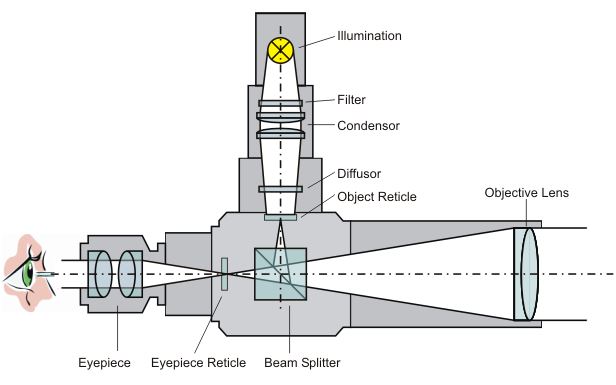
Visual autocollimator
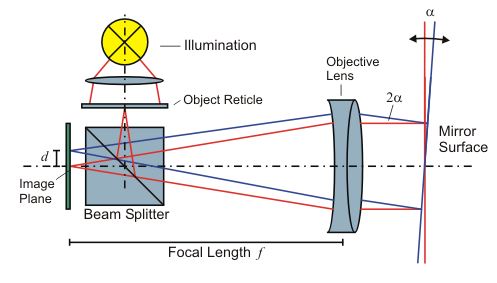
Operating principle of an autocollimator